Shri P Promoth IAS (West Bengal 2019), presently SDO, Gangarampur, Dakshin Dinajpur, is transferred and appointed as ADM, Murshidabad, West Bengal.
IndianBureaucracy.com wishes Shri P Promoth the very best.
Shri P Promoth IAS (West Bengal 2019), presently SDO, Gangarampur, Dakshin Dinajpur, is transferred and appointed as ADM, Murshidabad, West Bengal.
IndianBureaucracy.com wishes Shri P Promoth the very best.
Shri Sandeep Kumar Ghosh IAS (West Bengal 2016), presently ADM, Darjeeling, West Bengal, is transferred and appointed as Joint Secretary – Food & Supplies Department, West Bengal.
IndianBureaucracy.com wishes Shri Sandeep Kumar Ghosh the very best.
Shri Shevale Abhijit Tukaram IAS (West Bengal 2015), presently CEO, SJDA with additional charge of ADM, Darjeeling, West Bengal, is transferred and appointed as Special Secretary – Animal Resources Development Department, West Bengal.
IndianBureaucracy.com wishes Shri Shevale Abhijit Tukaram the very best.
Ministry of Culture and International Buddhist Confederation organized First Asian Buddhist Summit on 5th -6th November 2024 in New Delhi. One of the remarkable achievements of the first Asian Buddhist Summit was the successful organization of the two parallel forums, each offering an array of insightful perspectives. The arrangements of these forums allowed for a rich convergence of ideas, with one focusing on the foundational teachings of the Buddha and their modern-day applications, while the other explored the ways in which Buddhist principles can contribute to sustainable development, social harmony, and international cooperation.
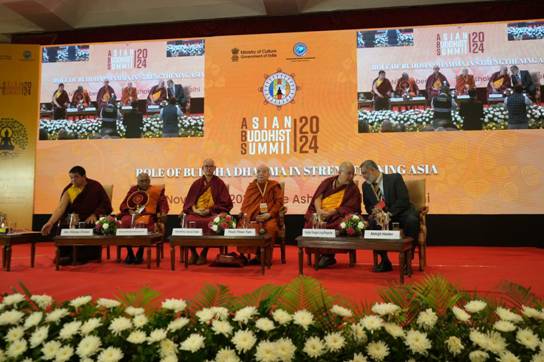
There were several presentations that offered unique alternatives, perspectives, and some ‘out of the box’ approaches looking at philosophical knowledge as a means for application and practical usage for the betterment of society. Seminars and Conferences, hitherto, had been mainly concerned with the religious aspects and its associated discourse. This Summit threw up many innovative ideas emanating from the ancient philosophy and science of Dhamma.
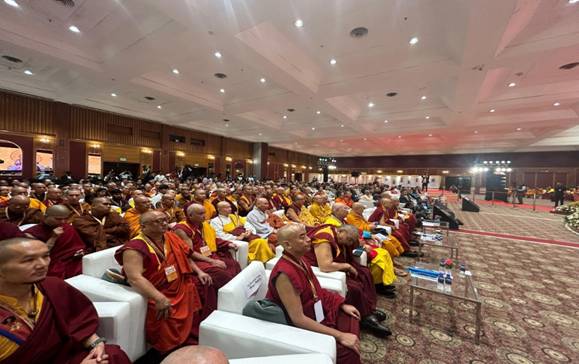
The First Asian Buddhist Summit, was organized by the Ministry of Culture and the International Buddhist Confederation (IBC), themed ‘Role of Buddha Dhamma in strengthening Asia’ . It saw a participation from 32 countries with over 160 international participants. Members of the Mahasangha, patriarchs of various monastic traditions, monks, nuns, members of the diplomatic community, professors of Buddhist studies, experts and scholars, around 700 participants, engaged enthusiastically with the topic.
Prof. Ceon Ramon from the Dept. of Electrical and Computer Engineering University of Washington, USA drew a comparison between the duration of Mental Cognition from Neuroscience and the Buddhist Perspectives of meditation in their Clinical Applications. Reflecting on the nature of arousal and cessation of a thought (the Dhyan- moment), measurements showed that these time frames are what meditators inferred centuries ago without a clock. This can be useful in the treatment of mental disorders based on Buddhist practices of paramitas and meditation combined with neurofeedback and visualization techniques. A unique contribution of Buddhist practice was introduced in Mongolian prisons by Mr Shirendev Dorlig, Director of the Vipassana Research Center in Mongolia. After some initial hiccups Vipassana meditation courses are giving very good results even in prisons with hardened criminals.
In his presentation MrDorlig stated that he insisted on certain working conditions from the prison authorities before initiating the courses. This included training of the prison officials in vipassana practice, a strictly regimented menu that was in line with the practice and tradition, and a daily ‘group sittings’ for the inmates at the end of the day to get a realistic assessment of the success rate.
Many presentations highlighted the vast areas in Central Asia, East Turkestan and the Russian Autonomous Republics of Kalmykia, Buryatia and Tuva that Buddhism had impacted, such as its influence in architecture, worshiping practices and the philosophical way of life, traces of which were evident archaeologically as well in ancient texts still available. Dr. Jagbir Singh from the Department of History, Dyal Singh Evening College, University of Delhi spoke about the Buddhist Influences on the Evolution of Chinese Architecture. He traced its development from the Han Dynasty to the present day.
In the 1st century the Han emperor Ming constructed the white horse monastery in honour of the first two Indian monks who went from India to China – KashyapMatanga and Dharmaratna.
This was the birth of Chinese Buddhist architecture. This form of architecture subsequently was woven into pure Chinese architecture resulting in a unique architectural heritage that reflects the spiritual and aesthetic values of Buddhism. Prof. Dr. Shobha Rani Dash, Head of the Department of Buddhist Studies, Otani University, Kyoto, Japan mentioned about the Hindu deities worshipped in Japanese Buddhism. She explained the pantheon of Hindu deities who were introduced to Japan with Buddhism as the Devas of the Buddhist pantheon. But gradually many of them have been assimilated with the Japanese native cult of Shintoism as well. She made a special mention of goddess Saraswati who is known as Benzaiten in Japan and revered by the locals.
Dr. YalcinKayali, Associate Prof. of Eastern Languages and Literatures at Ankara University, Turkey brought out the less known fact about the presence of Buddhism in the Uighur Turkish cultural world. This study focused on the Buddhist text known in Sanskrit as the SuvarṇabhāsaSūtra, which was transferred from the Chinese translation of the Dharmakshema to the Uyghur-Turkish Buddhist heritage area and named AltunYaruq (Golden Light Sūtra).
Dating back to the 4th century, its Chinese translations and those into Japanese and other European languages are thought to have contributed to incorporating ancient Buddhist doctrine into the world’s cultural heritage.
Similarly, Dr. Baatr U. Kitinov, Research Fellow from the Institute of Oriental Studies, Russian Academy mentioned how Buddhism had spread to eastern Turkestan and the role of the Uyghurs in sustaining Buddhism for long periods. He mentioned that Buddhism is still being practiced by certain smaller population groups in east Turkestan, who are expanding in number.
Ven. Dr. PolgolleKusaladhamma, HoD, Pali and Buddhist Studies, SIBA Campus from Sri Lanka explained the role of neurological researches on Buddhist meditation to identify utility of mindfulness practices to overcome physical infirmity, and other sufferings, especially negative forces in emotions that create mental unrest, unhappiness, fear, and frustration etc. He explained in detail on how Buddhism studies the nature of the mind and examines the rational description of the mind, guiding the followers to develop wholesome mental behaviours healing the mental afflictions.
Ven. Dr. UgyenTshering, lecturer at the International Buddhist Studies College (IBSC) of Mahachulalongkornraja vidyalaya University in Bhutan spoke about the famous concept Gross National Happiness (GNH) and how the Buddhist philosophy and principles underpin the concept of GNH, influencing Bhutan’s policies and societal values. It was Buddhism that played a significant role in enabling Bhutan to attain a high degree of GNH and explained how others can emulate the model.
Ven. Nguyen Ngoc Anh, a Vietnamese Ph.D Scholar in the University of Colombo, Sri Lanka explained the challenges that Buddhism faced in Vietnam during different periods, such as feudalism, colonialism and modernization.
However, engaged Buddhism had a profound impact on Vietnamese society; as the philosophy of liberation (Moksha), peace and happiness (nirvana) have held Vietnamese society strongly together as the country went through several conflicts. Introduced in Vietnam in the 2nd century AD, Buddhism forms the core essence of Vietnamese society.
Mr. RuslanKazkenov from Kazakhstan mentioned that even though Kazakhstan was not a Buddhist country there was a strong fondness for Buddhism and Buddhist philosophy in the country especially since Buddhism has several similarities or commonalities with Tengrianism. Moreover, Buddhism has influenced art, architecture and cultural traditions of the region (Central Asia), including elements of Buddhist art and in historical monuments. He suggested hosting the next Asian Buddhist Summit in Kazakhstan.
In the same spirit, scholars from Tajikistan and Uzbekistan mentioned how the people of these countries were becoming increasingly aware of their Buddhist heritage which was so well accepted by the locals in the early years of its spread in the region. They emphasized that there was significant scope for excavation of Buddhist sites that yet remain unexplored in these two countries. The representatives expressed keenness in engaging Indian experts on excavation and also academicians who could help stringing the essence of Buddha’s teachings and their application in this part of the world.
Shri Ratan Nama TCS Gr-II presently Addl. BDO, Kathalia RD Block has been transferred and posted as Addl. BDO, Old Agartala, RD Block, Tripura.
IndianBureaucracy.com wishes Shri Ratan Nama TCS the very best.
The International Solar Alliance (ISA) is a global initiative launched in 2015 by India and France at the COP21 summit in Paris to promote solar energy as a sustainable solution for energy access and climate change. Headquartered in India, the ISA is the first international organization established in the country, reflecting India’s commitment to multilateralism and a carbon-neutral future. With 120 Member and Signatory Countries, the ISA plays a key role in advancing global solar cooperation, enhancing energy security, and supporting the transition to cleaner energy systems.

The 7th Session of the International Solar Alliance (ISA), which was held in New Delhi from November 3 to 6, 2024, focused on accelerating solar energy deployment across its Member Countries, particularly in regions with limited energy access. During this session, several significant initiatives, programs, and funding schemes aimed at supporting solar energy projects and fostering global cooperation were presented and discussed.
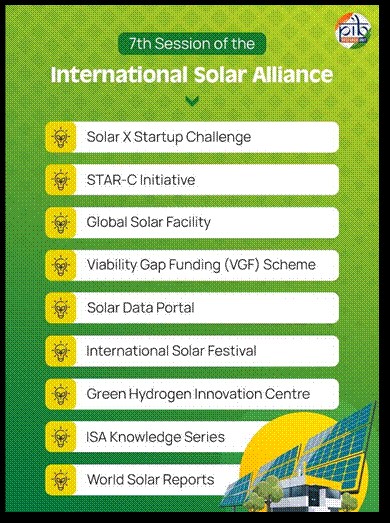
The ISA launched several key initiatives to advance global solar energy adoption. The SolarX Startup Challenge, introduced at COP27, supported innovative solar businesses in ISA Member Countries. The STAR-C Initiative strengthened solar technology skills in developing economies, while the Global Solar Facility catalyzed investment in underserved regions, particularly Africa. The Viability Gap Funding Scheme provided grants to solar projects in Least Developed Countries and Small Island Developing States, easing financial barriers. The Solar Data Portal offered real- time data to inform investment
decisions, and the International Solar Festival fostered global collaboration on solar solutions. Additionally, the Green Hydrogen Innovation Centre explored synergies between solar energy and hydrogen, and the ISA Knowledge Series and World Solar Reports promoted research, insights, and market trends, positioning ISA as a leading advocate for solar energy worldwide. The seventh session of the ISA Assembly elected Mr. Ashish Khanna from India as its third Director General. The Director General of the International Solar Alliance (ISA) played a pivotal role in advancing the organization’s mandate. This included supporting member countries in addressing shared challenges and fostering coordinated efforts to accelerate the global deployment of solar energy. The seventh session also elected its President and Co-President for 2024–2026. India was the sole candidate for President, while France won the Co-Presidency over Grenada.
Under the ISA Assembly’s Rules of Procedure, the President, Co-President, and Vice Presidents were elected with consideration for equitable geographical representation across four regional groups of the ISA Members: Africa, Asia and the Pacific, Europe and Others, and Latin America and the Caribbean. The eight Vice Presidents of the Standing Committee, two from each region, were selected based on seniority in ratifying the ISA’s Framework Agreement.
The Vice Presidents for the upcoming term were:
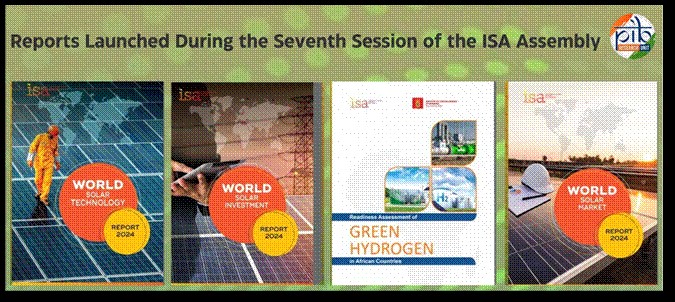
As the ISA’s apex decision-making body, the Assembly played a key role in shaping and overseeing the implementation of the ISA’s Framework Agreement and coordinating actions to meet its objectives. The International Solar Alliance, in collaboration with India’s Ministry of New & Renewable Energy, the Asian Development Bank, and the International Solar Energy Society, also hosted the third High-level Conference on New Technologies for Clean Energy Transition alongside the Seventh ISA Assembly. The conference aimed to turn dialogue into action, with sessions on advanced solar technologies, emerging storage solutions, and solar’s potential to drive equitable economic, social, and environmental development. Along with that, the third edition of the World Solar Report series was also launched, featuring four key reports: the World Solar Market Report, World Investment Report, World Technology Report, and the Green Hydrogen Readiness Assessment for African Countries. These reports focused on global solar growth, investment trends, technological advancements, and Africa’s potential in green hydrogen, each highlighting a critical aspect of the global transition to sustainable energy.
The genesis of ISA came from a shared vision between India and France to combat climate change through the widespread adoption of solar energy technologies. The founding conference of ISA was held on March 11, 2018, in India marked a significant step in mobilizing international efforts toward solar deployment. The ISA aims to achieve the Sustainable Development Goals, especially in the areas of affordable and clean energy (SDG 7) and climate action (SDG 13).
Initially focused on developing countries, the ISA’s Framework Agreement was amended in 2020 to allow all United Nations member states to join, further broadening its reach and reinforcing the global nature of the alliance. Today, the ISA represents 120 signatories, including 102 fully ratified member countries, making it a vital global coalition in the renewable energy landscape1. The Assembly meets annually at the ISA’s headquarters to assess the impact of programs and activities on solar energy deployment, performance, reliability, cost, and financing scale.
Objective:
The International Solar Alliance (ISA) aims to unlock US$1 trillion in solar investments by 2030 through its ‘Towards 1000’ strategy, focusing on reducing both technology and financing costs. This ambitious plan aims to provide energy access to 1 billion people and install 1,000 GW of solar energy capacity. Achieving these targets would significantly mitigate global carbon emissions, reducing 1,000 million tonnes of CO2 annually.
The ISA currently has nine comprehensive programs, each targeting a specific application to
1 https://isa.int/membership/membership_country_list?type=mcl
promote the deployment of solar energy solutions. These programs concentrate on three priority areas: Analytics & Advocacy, Capacity Building, and Programmatic Support, all aimed at fostering a conducive environment for solar energy investments within the country. These initiatives are designed to create a favourable environment for solar energy investments and facilitate sharing best practices among member countries.
By promoting solar energy across sectors such as agriculture, health, transport, and power generation, ISA member countries enact policies and share best practices to drive change. The alliance has developed and tested innovative business models for solar projects, supported governments in creating solar-friendly legislation through its Ease of Doing Solar analytics, and pooled demand for solar technology to lower costs. Furthermore, ISA enhances access to finance by mitigating risks and making the sector more appealing to private investors, ultimately fostering a sustainable energy future.
India’s commitment to renewable energy and climate action laid the groundwork for the formation of the ISA. India’s ambitious renewable energy goals, mainly its target of achieving 500 GW of non-fossil fuel-based energy by 2030, align closely with the ISA’s mission to drive solar energy adoption worldwide. This goal is part of the broader Panchamrit Initiative, which aims to reduce carbon emissions and promote sustainable development2. Furthermore, India plays a pivotal role in shaping ISA’s initiatives and fostering international cooperation. The nation’s extensive experience in scaling solar projects and policy frameworks serves as a model for other member countries, especially those in need of enhanced energy access. By sharing best practices and technical expertise, India aims to empower other nations in their solar energy journeys.
India’s solar sector is rapidly expanding, with the country ranking fifth globally in solar power capacity. As of September 2024, India’s installed solar capacity stands at approximately 90.76 GW, having increased 30-fold over the past nine years. The National Institute of Solar Energy estimates India’s solar potential at 748 GW.
Five Panchamrit targets includes (i) India will reach its non-fossil energy capacity to 500 GW by 2030, (ii) India will meet 50 percent of its energy requirements from renewable energy by 2030, (iii) India will reduce the total projected carbon emissions by one billion tonnes from now onwards till 2030, (iv) By 2030, India will reduce the carbon intensity of its economy by less than 45 percent, and (v) by the year 2070, India will achieve the target of Net Zero.
The country has made remarkable strides, with its installed non-fossil fuel capacity increasing by 396% in the last 8.5 years.
Approximately 46.3% of the country’s total energy capacity now comes from non-fossil sources. This growth reflects India’s commitment to
sustainable energy, as outlined in its ambitious target set during international climate discussions.
The Indian government’s proactive policies, including the allowance of 100% foreign direct investment (FDI) in renewable energy projects, further bolster the sector’s growth and attractiveness to investors. The ongoing technological advancements and a strong regulatory framework create a favourable landscape for solar energy projects.
The global nutraceutical market is currently estimated at around $400 billion, blending the fields of food, pharmaceuticals, and biotechnology. India stands out as a key player, supported by its rich heritage of traditional knowledge, especially in Ayurveda, and a unique ecosystem that fosters growth in this sector. However, India’s share remains under 2% globally, primarily due to a lack of defined industry classification within Indian ministries, limiting targeted sector support.
Recognizing the sector’s immense potential, the Council of Scientific and Industrial Research (CSIR) constituted a Nutraceutical Sector Task Force (TF) in November 2021 under the chairmanship of the Principal Scientific Adviser to the Government of India. This Task Force includes representatives from various ministries, including the Department of Commerce, the Department of Pharmaceuticals, the Food Safety and Standards Authority of India (FSSAI), the Ministry of AYUSH, and the Ministry of Food Processing. The TF also includes significant industry representation, ensuring that industry concerns and challenges are directly addressed. The Task Force’s mandate includes proposing policy measures to address challenges and drive initiatives toward the “Harmonized System of Nomenclature” and other international standards.
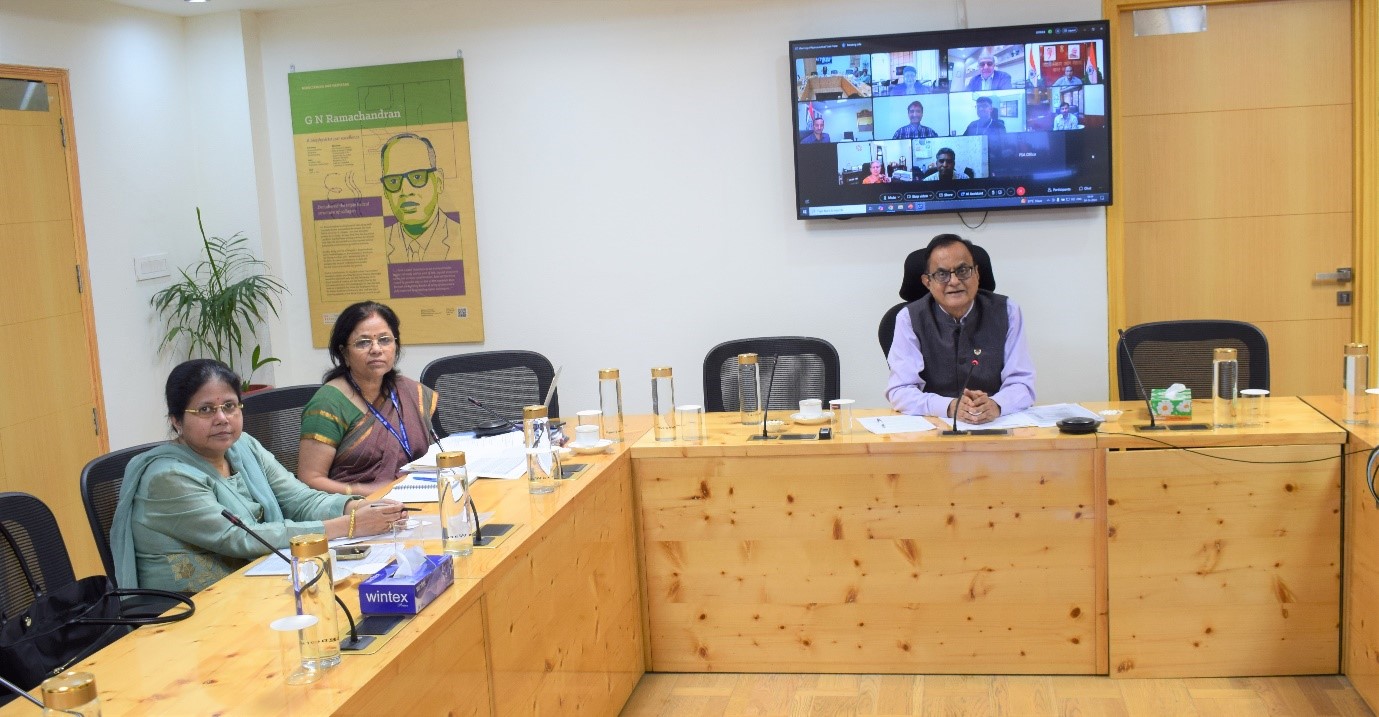
Key advantages for India in the nutraceutical industry include:
The TF’s initiatives have led to significant advancements, including:
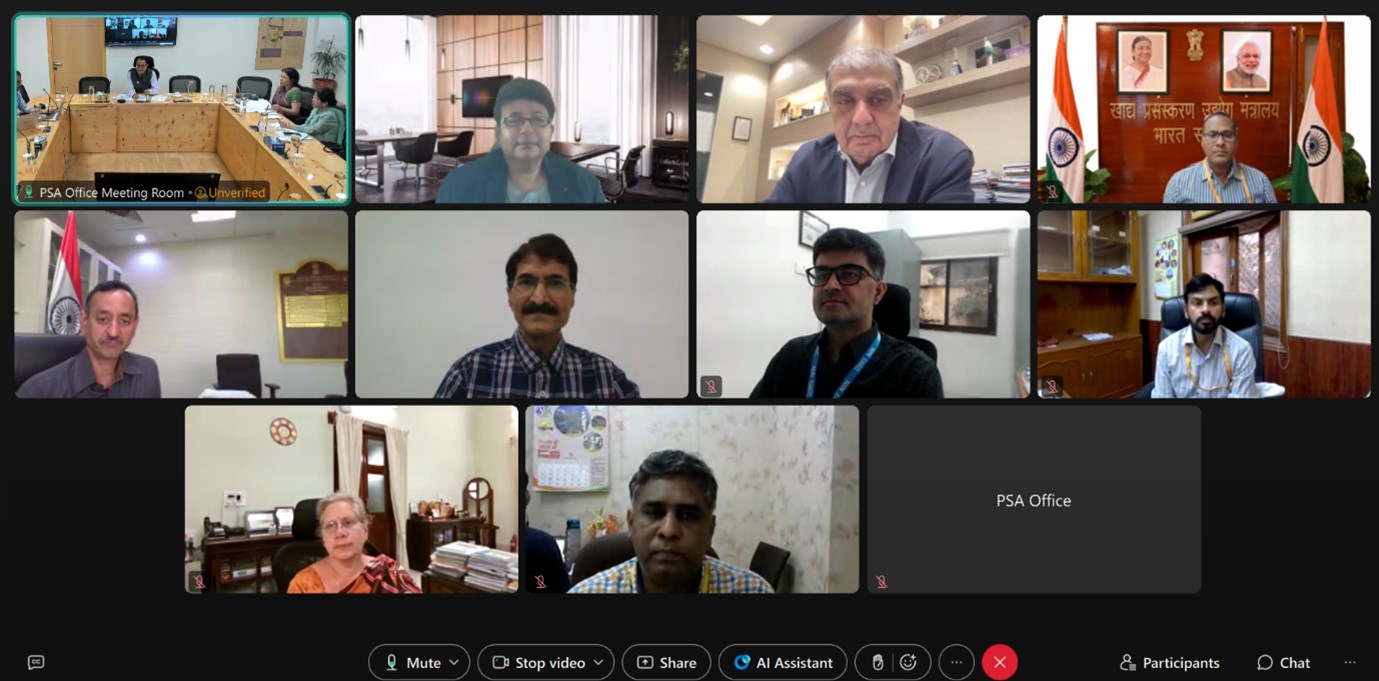
India has also prioritized infrastructure support, with nutraceutical incubation hubs and centers of excellence. NIFTEM-Kundli, Centurion University, and AIC-CSIR-CCMB have developed hubs fostering innovation, while the Kerala government inaugurated the first government-backed Nutraceutical Centre of Excellence in 2024.
Through the Department of Commerce, India has showcased its nutraceutical strengths at global trade fairs, enhancing visibility and forging connections with international stakeholders. The collaboration between the Task Force and the Central Board of Indirect Taxes and Customs (CBIC) is working toward a unique HSN code to streamline exports and simplify customs procedures.
With these strategic initiatives, India’s nutraceutical sector is set for unprecedented growth. India aims to position itself as a global leader in nutraceuticals, combining traditional knowledge with modern science to attract global partnerships and investments.
The Government of India has invited Proposals for setting up Centres of Excellence (CoE) under Research and Development (R&D) Scheme of National Green Hydrogen Mission. The call for proposals (CfP) has been issued by Ministry of New and Renewable Energy (MNRE) on 4th November 2024. The CfP document can be accessed here.
The objective is to establish world-class Centres of Excellence for Green Hydrogen in India to foster innovation, promote sustainability, thereby enhancing energy independence in the long term. These CoEs will accelerate the transition to a low-carbon economy by advancing Green Hydrogen production, storage, and utilization technologies.
The CoEs will act as focal points for cutting-edge research, skill development, and knowledge dissemination. These CoEs will also facilitate collaboration among stakeholders, including industry, academia, and Government in order to drive innovations in Green Hydrogen technologies, leading to improved process efficiencies and new product development. These centres will aggregate and leverage expertise and resources to advance the entire Green Hydrogen ecosystem in the country.
MNRE had earlier released Guidelines on 15th March, 2024, for the implementation of R&D Scheme under the National Green Hydrogen Mission. The Guidelines can be accessed here. It is expected that Public and Private entities including Research Institutions, Universities would form partnerships to submit proposals against this CfP. The Government has allotted Rs 100 crores for setting up such Centres, under the Green Hydrogen Mission.
The National Green Hydrogen Mission was launched on 4th January 2023, with an outlay of Rs. 19,744 crores up to FY 2029-30. It will contribute to India’s goal to become Aatma Nirbhar (self-reliant) through clean energy and serve as an inspiration for the global Clean Energy transition. The Mission will lead to significant decarbonization of the economy, reduced dependence on fossil fuel imports, and enable India to assume technology and market leadership in Green Hydrogen.
Air Marshal Ajay Kumar Arora assumed the appointment of Air Officer – in – Charge Maintenance at Air Headquarters on 01 Nov 24.
He is a graduate of Air Force Technical College , Bengaluru , Air Command and Staff College , USA and College of Defence Management , Secunderabad . An Electronics and Communication Engineer by qualification , he is also an alumnus of IIT Kharagpur and holds a Doctorate Degree holder in Management from the University of Pune .
Throughout his illustrious service spanning over 38 year , he has held several key command and staff appointments .
IndianBureaucracy.com wishes Air Marshal Ajay Kumar Arora the very best.
Justice Sanjiv Khanna presently Judge – Supreme Court has been appointed as the next Chief Justice of India.
Justice Sanjiv Khanna born on May 14, 1960 has had a remarkable and distinguished legal career. He enrolled as an advocate with the Bar Council of Delhi in 1983 and began his practice in the District Courts at the Tis Hazari complex, later advancing to the Delhi High Court and various tribunals. His extensive expertise spans across constitutional law, direct taxation, arbitration, commercial law, company law, land law, environmental law, and medical negligence, showcasing his versatile legal acumen.
Justice Khanna served with distinction as the Senior Standing Counsel for the Income Tax Department and, in 2004, was appointed as the Standing Counsel (Civil) for the National Capital Territory of Delhi. Additionally, he demonstrated dedication and skill in criminal law by appearing as an Additional Public Prosecutor in the Delhi High Court and contributing as amicus curiae in numerous cases.
His judicial journey continued with his elevation as an additional judge of the Delhi High Court in 2005, becoming a permanent judge in 2006. His leadership was exemplified as he held esteemed positions such as Chairman/Judge-in-charge of the Delhi Judicial Academy, the Delhi International Arbitration Centre, and the District Court Mediation Centres.
On January 18, 2019, Justice Khanna ascended to the Supreme Court of India, where his contributions have been invaluable. He has held prestigious roles, including Chairman of the Supreme Court Legal Service Committee from June 17, 2023, to December 25, 2023. Currently, he serves as the Executive Chairman of the National Legal Services Authority and as a member of the Governing Council of the National Judicial Academy in Bhopal.
Justice Khanna’s contributions to the Indian legal system reflect his dedication and remarkable service.
IndianBureaucracy.com wishes Shri Justice Sanjiv Khanna the very best.
Union Home Minister and Minister of Cooperation Shri Amit Shah addressed the inaugural session of the two-day ‘Anti-Terrorism Conference-2024’ organized by the National Investigation Agency (NIA) in New Delhi . Union Home Minister unveiled the motto of NIA, released the SoP for UAPA investigations and facilitated 11 medal winners from the NIA. Several dignitaries were present, including Union Home Secretary Shri Govind Mohan, Director, Intelligence Bureau (IB Shri Tapan Kumar Deka,), Deputy National Security Advisor Shri Pankaj Singh, and NIA Director General Shri Sadanand Vasant Date were present on the occasion. The conference is being attended by senior police officers from States/UTs, officers from Central agencies/Departments dealing with issues related to Counter Terrorism and experts from related fields such as law, forensics, technology etc.
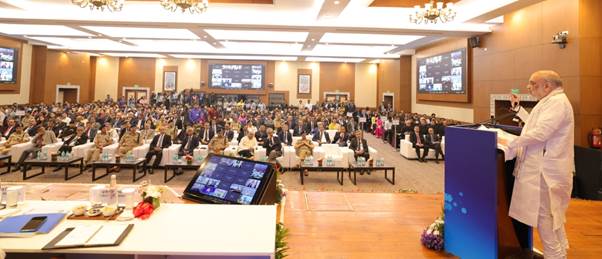
Addressing the conference, Union Home Minister said that NIA is not just an investigating agency and under its aegis, anti-terrorist activities across the country should be compiled and promoted and measures should be taken so that the investigating agency stands firmly in the court and the anti-terror mechanism is strengthened.
Shri Amit Shah said that 11 medal winners have also been felicitated . He said that in the 75 years since India’s independence, 36,468 policemen have made supreme sacrifice for internal security and protection of borders to maintain the security of the country.
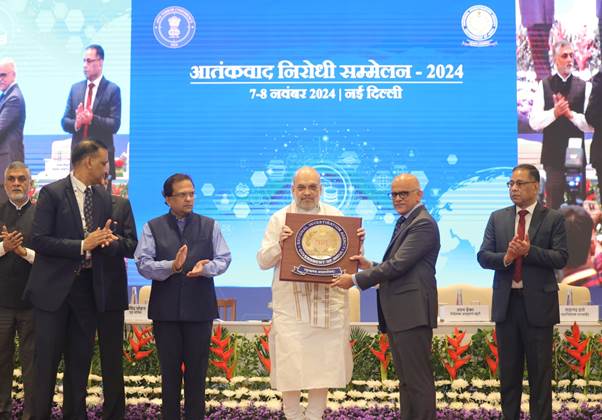
Union Home Minister and Minister of Cooperation said that in the 10 years since Shri Narendra Modi became the Prime Minister in 2014, the Government of India has moved ahead with a concrete strategy against terrorism. He said that Modi ji’s slogan of ‘Zero Tolerance against Terrorism’ has been accepted not only by India but by the entire world. In the last 10 years, a strong ‘ecosystem’ has been built in India to combat terrorism. Shri Shah added that although much remains to be done, but if we take an overview of the work done over the past 10 years, it can be considered satisfactory. Home Minster also announced that the Ministry of Home Affairs will soon introduce a National Counter-Terrorism Policy & Strategy to fight terrorism, terrorists, and the entire ecosystem supporting them.
Shri Amit Shah said states have their own geographical and constitutional limitations, while terrorism and terrorists have no boundaries. He said that terrorists engage in both international and interstate conspiracies, and to develop an effective strategy against them, we need to build a strong system through conferences like this. This will help curb activities such as terrorism, narcotics, and hawala operations, which threaten the country’s borders and economy. He expressed confidence that this conference will not only serve as a platform for discussion but will also bring forth actionable points that will strengthen our fight against terrorism. He said that the true utility of such conferences lies in taking the actionable points down to the police station and beat levels. From the beat officers to the Director General of NIA, the entire system should be successfully made aware of the threats posed by terrorism.
Union Home Minister and Minister of Cooperation said that the world recognizes that numerous steps have been taken by India to combat terrorism since Shri Narendra Modi became the Prime Minister. He mentioned that fighting terrorism does not merely mean uncovering a few conspiracies; rather, it means legally empowering the agencies fighting terrorism and creating an ecosystem that strengthens our fight against it.
Shri Amit Shah noted that on August 2, 2019, amendments were made to the NIA Act, which added new offences and granted extra-territorial jurisdiction, allowing the NIA to conduct investigations abroad as well. He mentioned that on August 14, 2019, amendments were also made to the UAPA, empowering authorities to seize property and designate individuals and organizations as terrorists. He added that the Ministry of Home Affairs has coordinated efforts for deradicalization, various ministries have developed their own strategies, and MHA has established an institutional framework for this purpose.
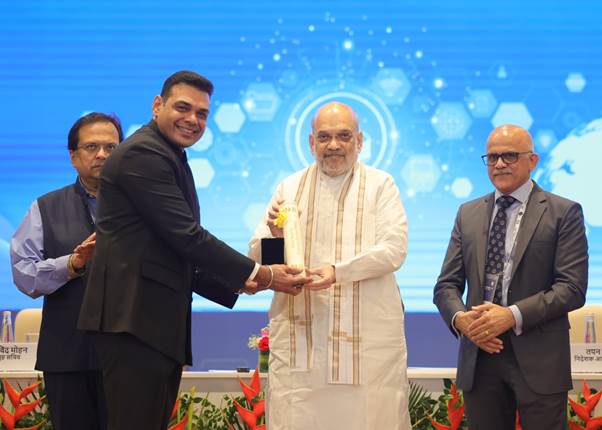
Home Minister said that in the year 2020, a 25-point integrated plan was formulated to control the funding of terrorism, with a range of measures from jihadi terrorism to northeast, Left-Wing Extremism, fake currency to narcotics. From FCRA to radicalisation financing to smuggling of illegal arms, the work was done to break the ‘ecosystem’ with coordination among various agencies and it has yielded very good results. He said that significant changes were made in the functioning of the Multi-Agency Centre (MAC). Shri Shah mentioned that the National Memory Bank was established, and steps were taken to implement it effectively. A central database based on intelligence was also created. He added that several databases have been developed, which can benefit efforts to root out terrorism.
Union Home Minister and Minister of Cooperation said more than 15 organizations have been declared as Terrorist Organizations and Unlawful Associations, and recently, seven more organizations have also been designated as Terrorist Organizations. Shri Shah said that since 2014, there has been no major terrorist incident in the country. He mentioned that in last 10 years there has been a 70% reduction in terrorist incidents.
Shri Amit Shah said that in the last five years, the implementation of several databases has been carried out. NATGRID is a centralized data access solution, and there is a need to develop a work culture among officers up to the Superintendent of Police level to effectively use it. He added that initiatives like NCORD, NIDAAN, and MANAS are being utilized with AI by the NIA. He emphasized that these databases should be used at all levels of police forces in all states.
Union Home Minister said that the NIA has investigated cases under the UAPA and has successfully achieved a conviction rate of nearly 95%. Shri Shah emphasized that unless all forces utilize technology, we cannot effectively combat the menace of terrorism. He mentioned that terrorism is a boundless and invisible enemy, and to win the war against it, we must equip our young officers with the necessary technological tools.
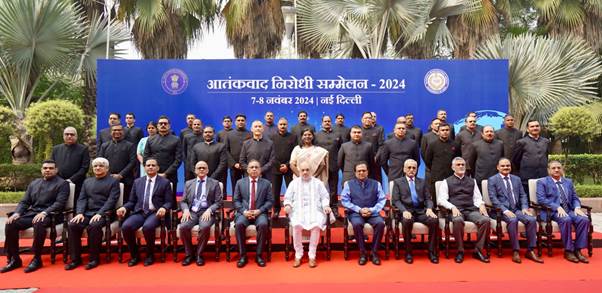
Shri Amit Shah described the three new criminal laws as transformative for the country’s criminal justice system. He stated that all states need to implement these laws in both letter and spirit. Shri Shah added that once these laws are fully implemented in jail, forensics, courts, prosecution, and police, India’s criminal justice system will become the most modern in the world. He added that these new laws have, for the first time, provided a clear definition of terrorism.
Union Home Minister stated that to win the fight against terrorism, a “Whole of Government Approach” is essential, and we need to create an integrated, actionable system. He emphasized that to address challenges such as terror financing and new threats like crypto currencies; a coordinated approach must be adapted from police stations at the state level to the offices of the Directors General of Police. Shri Shah said that the time has come to shift from a “Need to Know” approach to a “Duty to Share” approach.
Shri Amit Shah urged that all states should consider the fight against terrorism as their own. He said that under the leadership of Prime Minister Shri Narendra Modi, the Ministry of Home Affairs will create an ecosystem with a strong resolve to fight terrorism, deliver results, and successfully root out this menace.